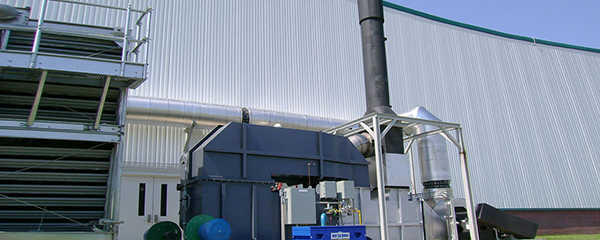Catalytic thermal oxidizers

Catalytic thermal oxidizers
LOWER TEMPERATURES WITH GREATER CONTROL AND HIGH EFFICIENCIES
While EPA, federal and local regulations are generally the same when applied to manufacturers of all types, not all thermal oxidation systems are created equal. Companies that produce HAPs and VOCs as a byproduct of their manufacturing processes often have different needs depending on a variety of factors.
Catalytic thermal oxidizers use precious and base metal catalysts to increase the temperature of the emissions taken in, allowing these systems to operate at lower temperatures than that of other options, like a regenerative thermal oxidizer. Reduction in the amount of heat needed to destroy pollutants results in curbed fuel and energy costs. The use of catalysts also allows start-up time to be reduced, resulting in greater control over the thermal oxidation process.
THE ADVANTAGE OF CATALYTIC THERMAL OXIDIZERS
Aside from reduced energy consumption and shorter start-up time, a CO (sometimes called CATOX, CTO, RCO or CRO) has several other advantages.
Due to the nature of using a catalyst and the single exhaust stack, most COs have a smaller footprint on a company’s property, when compared to other types of thermal oxidizers. The size of the system is especially advantageous for manufacturers that are looking to maximize the space they have or those that are planning an expansion in the future. RCOs are expansion-ready, easily modified to enable greater capacity.
In addition to operating at lower temperatures, a catalytic thermal oxidizer is also flameless, making them even safer than other options. COs have lower operating emissions, resulting in an even more environmentally-friendly way to destroy VOCs and HAPs.
Among the most distinct advantages of these systems is that due to their resilience and shorter start-up times, COs can be operated for shorter periods of time than other thermal oxidation systems. Having control over when a CO can be operated is often advantageous for companies, giving them more flexibility in their production scheduling.
NESTEC CATOX SYSTEMS
For systems using a base metal catalyst coated onto a ceramic bead substrate, NESTEC’s design utilizes a tray arrangement with a gas hourly space velocity of around 14,000 h-1. The catalyst bed is designed into a recuperative oxidizer located between the inlet pass outlet of the heat exchanger and the combustion chamber. For systems that require a precious metal catalyst, NESTEC uses a coated ceramic monolith as provided by SŰD Chemie-Clariant.
NESTEC’s catalytic thermal oxidation systems allow for easier and faster cleaning when benchmarked against other options. Cleaning can be done by simply removing the beads in the unit and tumble-cleaning them before returning them to the system, typically requiring a small amount of make-up catalyst to be introduced to the system as well. These RCOs also feature a full flow online bake out feature, which operates similarly to a self-cleaning oven, but without the need to stop operation or cause lengthy downtime.
These systems enhance process safety, not only due to the flameless nature of the process but because maintenance is so easily performed. RCO bakeout capabilities eliminate large accumulations of organic material inside the chambers, drastically reducing the potential for partial failure or runaway fires. As an added bonus, regeneration of high temperature catalyst occurs during the bakeout process.
During all system inspections, NESTEC coordinates testing of the catalyst to ensure prime performance and adherence to standards.